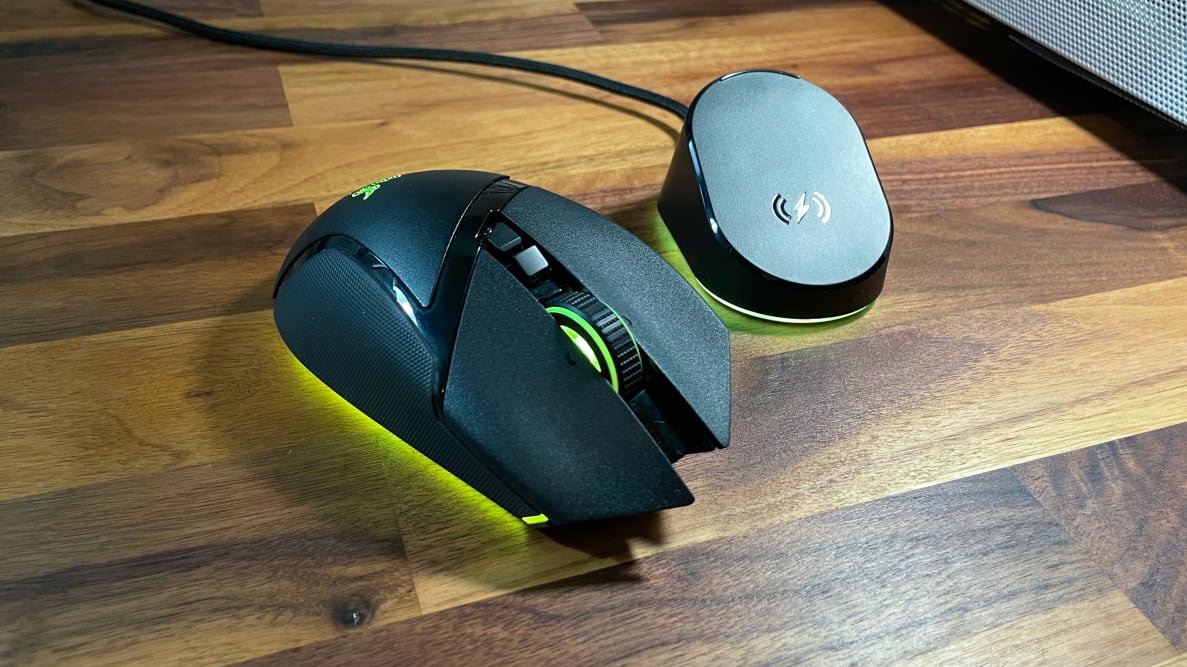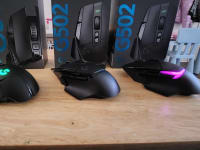Pros
-
Packed with features
-
Excellent customizability
-
Supremely comfortable
Cons
-
Expensive wireless charging dock
-
Dismal battery life with RGB
About the Razer Basilisk V3 Pro
Here are the specs of the gaming mouse we tested:
- Price: $160
- Connectivity: 2.4GHz HyperSpeed wireless (USB-A dongle), Bluetooth 5.0, USB A-to-C cable (included)
- Dimensions: 5.11 x 2.96 x 1.67 inches
- Weight: 112 grams (3.95 ounces)
- Sensor: Razer Focus Pro 30k sensor
- Colors: Black, white
- Material: Plastic
- LED lighting: 13 addressable zones, 16.8 million colors
- Battery life: Up to 90 hours with RGB disabled
- Buttons: 11, programmable
- Special features: 4000Hz polling rate (HyperPolling dongle or Mouse Dock Pro only), 750 IPS max speed, 70G max acceleration, Razer gen-3 optical switches (rated for 90 million clicks), wireless charging compatible, electronically actuated notched and free-spinning mouse wheel modes.
Razer’s Basilisk V3 Pro keeps an identical look to the wired Basilisk V3 but bumps the sensor up from 26,000 DPI to 30,000, upgrades the optical switches to gen 3 (90 million versus 70 million clicks), and introduces 2.4GHz HyperSpeed wireless and Bluetooth connectivity options. The HyperSpeed dongle can also be used to simultaneously pair Razer’s gaming keyboards, like the Deathstalker V2 Pro, and the mouse to your PC.
The Basilisk V3 Pro supports wireless charging, but not out of the box. You’ll either need to purchase the Razer Wireless Charging Puck for standalone compatibility with other wireless Qi certified charging mats or docks, or the $70 Mouse Dock Pro, which includes the charging puck. The dock can also be used as a 4000Hz wireless hub, enabling high-speed wireless connectivity, but at the time of writing only pairs with the Basilisk V3 Pro.
Razer doesn’t advertise official compatibility with any platform other than PC.
What we like
It’s supremely comfortable
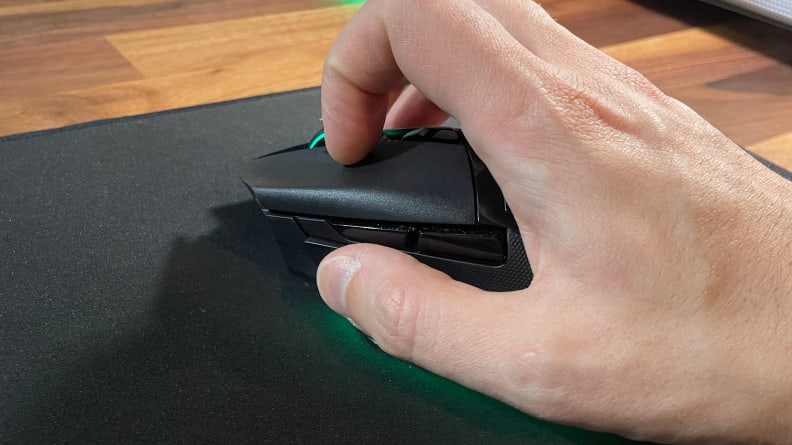
It's an easy mouse to get accustomed to.
After using the Basilisk V3 Pro for three weeks as my primary mouse, I never felt uncomfortable or wrist strain. Even after extended gaming sessions or doing fine refining mask work in Photoshop, I always felt like I could keep going. Despite having smaller hands, I could comfortably hit nearly every one of the ten topside buttons without changing my grip.
It also doesn’t look too dissimilar from its predecessors, which is a great thing. The styling is aggressive but comfortable; the flared pad provides a natural resting place for your thumb, and the diagonally sloped left and right mouse buttons similarly seat your index and middle fingers without overhang. It’s very reminiscent of Logitech’s beloved G502.
The switches are also stiff enough to prevent me from misclicking while resting my fingers on either mouse button, an issue I’ve come across on some less expensive Logitech mice. The divots in the center of the left and right buttons prevent you from hitting the scroll wheel by accident.
The scroll wheel is the best I’ve ever felt on a mouse. It can switch between tactile or free spinning at the touch of a button, and you can enable “Smart-Reel” mode in Razer Synapse. This combines the two spin modes, allowing the tactile, notched scroll wheel to spin freely if you rake it fast enough. You can also enable scroll acceleration and make pages scroll faster depending on how fast you spin the wheel.
Apart from the internals, one of the biggest upgrades over the Basilisk Ultimate is the reconfigured and expanded layout of the PTFE feet; the Basilisk V3 Pro smoothly glides without interruption.
Overall, using the Basilisk V3 Pro just feels good.
Packed with features
The mouse’s ergonomics are paired with 11 programmable buttons (technically Razer calls this “10+1” since it includes the profile button on the bottom). Using Razer Synapse, you can change all of them, assuming you have a left-click somewhere once you’re done. That ranges from changing the mouse’s layout to assigning media control keys, launching programs at the click of a button, and even pasting text and initiating keyboard macros.
One area of the Basilisk V3 Pro that shines is the RGB lighting; apart from something like the super stripped back Viper V2 Pro, if you’re buying a Razer product, it’s to be expected. The lighting is bright even when set to only 30%, and you can customize the colors and patterns in Chroma Studio and, sync them to audio or on-screen gameplay, or make your own layered effects.
If you spring for the Mouse Dock Pro, the lighting effects can be synchronized between the two, and when charging, the mouse will “breathe” in different colors to indicate its battery level. But it’s too bad that you can’t see any of this when your hand is on the mouse, making it largely pointless.
While Synapse is fully featured and it’s easy to set up custom lighting profiles and even sync your Razer devices together, it, unfortunately, doesn’t offer as many customization options as Logitech’s G Hub does.
If you pick up the Logitech G502 X Lightspeed for $139.99 or the $159.99 G502 X Pro (the Basilisk V3 Pro’s main competitor), G Hub will let you create custom macros that only work in individual programs or download them from the community. Synapse will let you create custom mouse profiles that launch when the corresponding game or program launches, which is great, but the system is far clunkier than Logitech’s.
You can also export these custom profiles out of Synapse, but to download profiles others have made, you’ll need to look online and download them manually rather than through the software. You’ll spend more time dialing your settings in.
It’s a great all-rounder
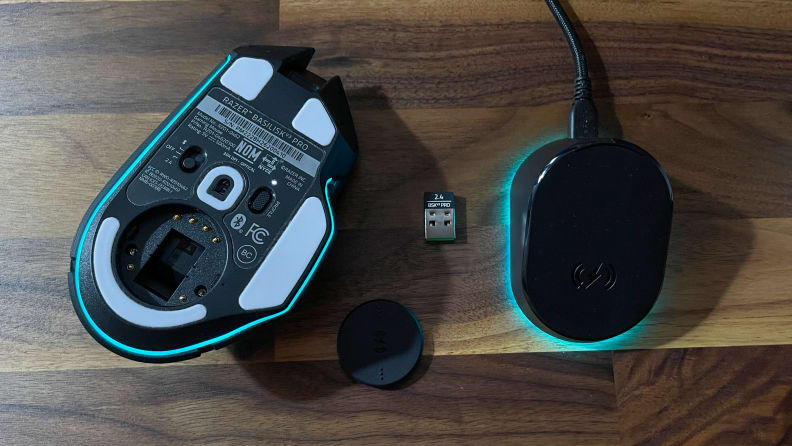
You connect to the dongle wirelessly via a USB stick that goes underneath the mouse.
Razer Basilisk V3 Pro also delivers where it counts, in games. It’s not a super light mouse, but I have no trouble quickly swinging it across my mouse pad in frantic action games.
I typically play at 3200 DPI, which is a higher sensitivity than most people, but even then the Basilisk V3 Pro had no trouble tracking the tiniest movements thanks to its high-quality sensor and higher polling rate.
Whether it’s tracking a headshot in Fortnite or taking a pistol aiming challenge in Aim Lab, the button to dial down DPI lets me slow my cursor enough to do so. Even the adjustable scroll wheel is handy for PC gaming, as it’s helpful to quickly rake through pages of dialogue or skill trees in RPGs.
It’s also a boon to productivity tools like Photoshop, where I frequently need to mask fine edges but cycling through DPI levels is tedious. And, if you don’t need that particular button in any of your work-related programs, you can assign a custom profile to it as mentioned.
While the Basilisk V3 Pro isn’t as fully featured as Logitech’s G502 X Lightspeed, it does have Bluetooth connectivity, something the latter mouse lacks.
This is a nice perk, especially if you’re connecting to a laptop with limited ports, but it doesn’t extend the mouse’s compatibility to operating systems other than Windows.
My M2 MacBook Pro refused to pair with the mouse despite recognizing it as a Bluetooth device, and I was only able to connect via USB-C cable.
What we don’t like
The DPI button still falls short
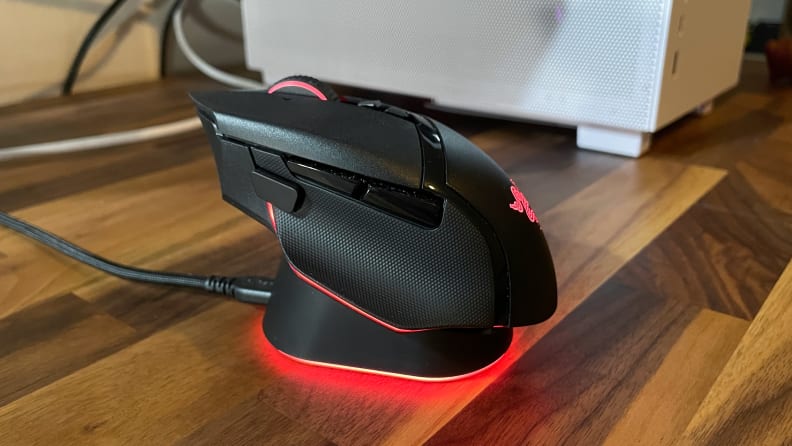
Battery life will be your biggest opponent.
One of the biggest complaints about the previous generation of Basilisk mice is that the removable DPI paddle was a tad too short for many people to consistently hit with their thumb. Razer has addressed this by replacing the paddle with a non-removable button that… is still too short. It’s especially noticeable since everything else is within easy reach.
I can’t consistently hit the button in games unless I adopt a claw grip, which isn’t what the Basilisk V3 Pro is designed for given the mouse’s length. Razer missed an opportunity to make the button a few millimeters longer and appeal to a wider variety of hand sizes.
It chews through battery life
Another area the Logitech G502 X Lightspeed (and even the Pro model) surpasses the Basilisk V3 Pro in is battery life. Razer advertises up to 90 hours of battery life on this mouse, but that’s without RGB. If you turn it on, expect your performance to nosedive.
With RGB set to 100% brightness, the Basilisk V3 Pro lasted a little over a day, even when it shut off at night to conserve power. With RGB set to about 33% brightness, it lasted for about four days between charges.
If you don’t have the dock, you’ll have to charge the mouse via the included USB-C to USB-A cable, which is at least braided and lightweight, so it won’t slow you down if you need to use it.
The dock is integral
My problem isn’t with the dock itself—it’s the cost. At $160, the mouse is already expensive, but if you want the Razer Mouse Dock Pro, which is both a wireless Qi charger and 4000Hz transceiver, and comes with a wireless charging puck for the mouse, expect to pay $200 total, or an extra $70 if you buy it standalone.
By comparison, the Basilisk Ultimate retailed for $170 with the dock when it was released in 2019, and this only pairs with the Basilisk V3 Pro at the time of writing. Alternatively, if you just want the 4000Hz polling rate, you can buy the Razer HyperPolling Wireless Dongle for $30 instead.
Since Razer uses the open Qi charging standard, if you have the wireless charging puck (available with the dock or separately for $20), the mouse will also play nice with Logitech’s Powerplay wireless charging mat.
The pricing problem is compounded when you consider that the Razer Basilisk V3, the wired version that looks identical and packs a last-gen 26K DPI sensor and second-gen Razer optical mouse switches, costs only $69.
Should you buy the Razer Basilisk V3 Pro?
Maybe, if you can justify the cost
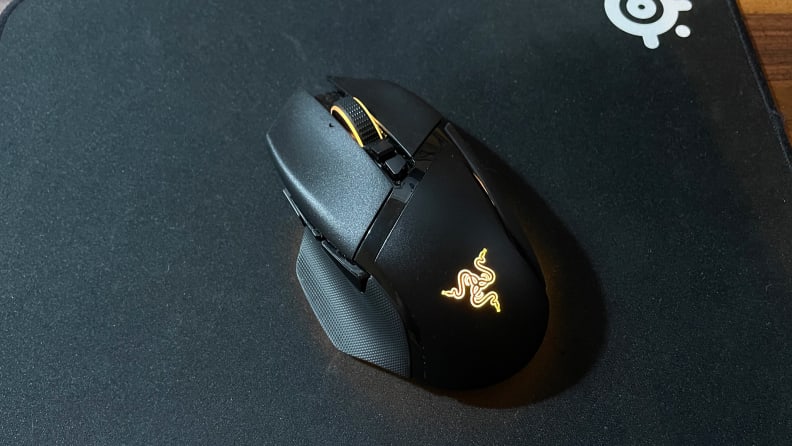
It's one of the better gaming mice around, even if it comes at a hefty cost.
The Razer Basilisk V3 Pro is one of the best, if not the best, gaming mice I’ve ever used. It’s comfortable, feature-rich, and is just at home in Horizon Zero Dawn or Apex Legends as it is doing productivity work. I want one for myself now, and it’s truly unfortunate that I can’t give it a wholehearted recommendation. Some options come close without costing nearly as much.
If you can live without wireless connectivity, the aforementioned Razer Basilisk V3 will get you most of what makes the Basilisk V3 Pro great at less than half the cost. Otherwise, the Corsair Dark Core RGB Pro SE is only $70 and tops our list of best gaming mice (just be warned that the sensor is only 18,000 DPI). If you want something more recent and are willing to spend over $100, the Logitech G502 X Lightspeed is probably your best bet.
If you can find the Basilisk V3 Pro on sale (and it has dropped to $120 recently), especially as a bundle with the dock or a wireless charging puck, it offers everything you could ask for in a gaming mouse and more.
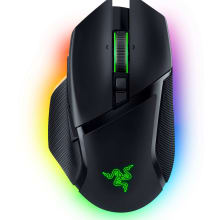
The Razer Basilisk V3 Pro is loaded with features.
Meet the tester
Jonathan is an Electronics Editor for Reviewed specializing in gaming gear and has experience with everything from controllers to benchmarking the latest GPUs. He was previously the Web Editor at The Architect's Newspaper.
Checking our work.
Our team is here to help you buy the best stuff and love what you own. Our writers, editors, and experts obsess over the products we cover to make sure you're confident and satisfied. Have a different opinion about something we recommend? Email us and we'll compare notes.
Shoot us an email